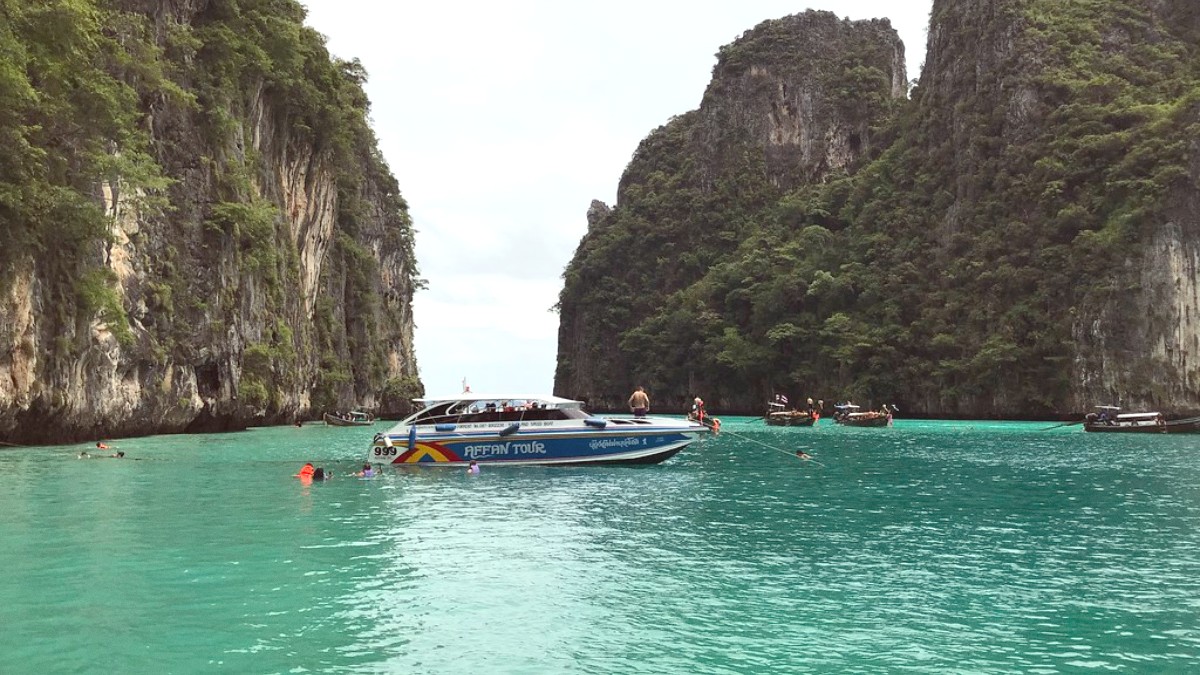
Andaman Coast, Thailand
Phuket Town presents a striking contrast to the beach-focused parts of the island. While many visitors travel to the sandy shores of Patong or Kata, those seeking a cultural experience find their place here. The town's atmosphere supports leisurely exploration, offering a chance to observe daily life. You discover street art murals that add a modern touch to historic walls. Explore museums housed in beautifully restored buildings. Taste local dishes passed down through generations. The town’s appeal lies in its ability to offer both relaxation and active discovery, adapting to various travel styles. It forms a base for wider island exploration while offering enough within its own bounds to keep you engaged for days.
Phuket Town sits on the eastern side of Phuket Island, a landmass located in the Andaman Sea, off Thailand’s southwestern coast. The town is the island's administrative and commercial hub. Unlike the popular beach resorts that line the western and southern shores, Phuket Town is inland, several kilometers from the nearest coastline.
The town itself features varied topography, with gentle hills rising around its core. Rang Hill, also known as Khao Rang, stands prominently to the northwest of the Old Town, offering panoramic views across the townscape, the sea, and distant islands. This elevation offers a natural viewpoint and a refreshing breeze. The central area of Phuket Town, especially the Old Town, occupies relatively flat terrain, supporting easy walking.
Phuket Town's history ties deeply to the tin mining industry, which boomed on Phuket Island in the 19th and early 20th centuries. This tin wealth transformed Phuket from a quiet fishing village into a thriving commercial hub. European powers, notably the British, and later Chinese entrepreneurs, invested heavily in mining operations, bringing both capital and labor to the island.
The tin boom brought a wave of immigration, mainly from southern China. These Chinese migrants, alongside Malay traders and local Thais, formed a diverse community. Their combined influences are evident throughout Phuket Town's architecture, cuisine, and customs. Wealthy tin barons built mansions and shophouses, blending Chinese and European design elements. Each building is a tangible link to this prosperous era and the cultural fusion it produced.
A period of great prosperity and development.
A significant cultural and demographic shift for the island.
A unique architectural style reflecting mixed heritage.
Distinct customs, cuisine, and costumes from intermarriage.
Phuket's past as a port in the Andaman Sea.
Beyond tin, Phuket also functioned as a port for ships traversing the Andaman Sea. This trade further enriched the town, bringing goods, ideas, and people from across Southeast Asia and beyond. The town’s development faced challenges like rebellions and natural disasters, yet it consistently recovered, growing into the resilient and culturally rich place it is today.
Wat Chalong, the island's most important temple, holds historical significance related to its abbots' roles in quelling a Chinese rebellion in the late 19th century, a testament to the complex social dynamics of the time.
The Peranakanitat Museum in Phuket Town specifically highlights the unique Baba Nyonya heritage, showing its distinct local dishes, elaborate traditional costumes, and specific customs.
Phuket Town serves as a living museum, continually evolving while preserving its past.
Phuket Town offers a distinct and enriching travel experience on Phuket Island. It presents a cultural depth not always found in the beach resorts. The town’s main appeal lies in its well-preserved historical core, Phuket Old Town. Visitors explore streets like Thalang Road, Dibuk Road, and Soi Romanee, admiring the colorful Sino-Portuguese architecture, which blends Chinese and European influences.
These shophouses now host boutique cafes, art galleries, guesthouses, and independent shops, creating a charming atmosphere. The Sunday Walking Street Market on Thalang Road transforms the area into a lively evening bazaar, showing local crafts, food, and performances.
Savor unique Southern Thai and Peranakan dishes like Mee Hokkien and Lo Ba. Street food stalls and traditional eateries offer authentic tastes at accessible prices.
Visit the Phuket Thai Hua Museum, Peranakanitat Museum, Wat Chalong, and various Chinese shrines like Jui Tui. Enjoy panoramic views from Rang Hill Viewpoint.
Stay in budget-friendly hostels or charming boutique hotels. Explore on foot, use blue songthaews for beaches, or Grab for ride-sharing. Major piers are close by for easy day trips.
Day trips from Phuket Town are effortless, with major piers close by for ferries and speedboats to the Phi Phi Islands, James Bond Island, and other Andaman gems.